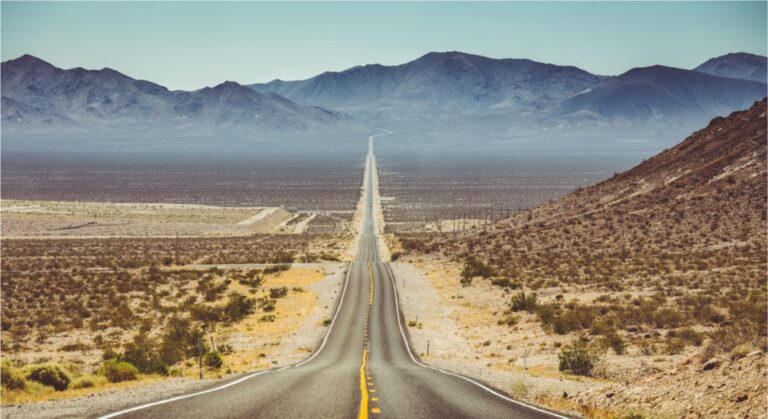Death Valley National Park, the largest national park in the contiguous United States, is a land of extremes, characterized by soaring temperatures, unique geological formations, and stark desert beauty. Beyond its desolate and arid landscape, Death Valley offers an array of hiking trails that cater to various experience levels, providing opportunities to immerse oneself in the park’s captivating wilderness.
Must-Hike Trails for an Unforgettable Adventure
Golden Canyon Trail
A short but rewarding hike, Golden Canyon Trail leads hikers through towering canyon walls displaying vibrant hues of gold and red. The trail culminates at Zabriskie Point, offering panoramic views of the valley. Difficulty: Easy; Distance: 3.5 miles
Badwater Basin Trail
Descending below sea level, Badwater Basin Trail offers a unique experience in the lowest point in North America. Hikers can admire the vast salt flats, shimmering in the sunlight, and capture surreal photographs. Difficulty: Easy; Distance: 1.3 miles
Artists Palette Drive & Vista
While not a hiking trail per se, Artists Palette Drive and Vista provide an exceptional overview of the valley’s vibrant geological formations. This scenic drive features colorful hills and mountains, revealing the region’s volcanic past. Difficulty: Easy; Distance: 9-mile drive
Dante’s View Hike
One of the most iconic hikes in the park, Dante’s View Hike rewards hikers with breathtaking vistas of the valley floor from Dante’s View, located 5,475 feet above the valley. This challenging hike offers a physically demanding yet unforgettable experience. Difficulty: Strenuous; Distance: 13 miles
Mosaic Canyon Trail
Discover hidden water sources and surreal geological formations along Mosaic Canyon Trail. This slot canyon hike features narrow passages and pools of water, showcasing the park’s hidden beauty. Difficulty: Moderate; Distance: 4-mile loop
Mesquite Flat Sand Dunes
Experience a unique desert adventure by hiking through Mesquite Flat Sand Dunes. This vast expanse of shifting sands offers opportunities for sandboarding and hiking, allowing visitors to explore the area’s ever-changing landscape. Difficulty: Easy; Distance: 1 mile (loop around the dunes)
Wildrose Charcoal Kilns
Step into the park’s cultural history by exploring Wildrose Charcoal Kilns. This preserved site features 12 25-foot-tall beehive-shaped kilns, remnants of a charcoal-producing industry that once operated in the area. Difficulty: Easy; Distance: 1-mile loop
Salt Creek, Salt Tram, and Telescope Peak Trails
For an extended and challenging adventure, combine Salt Creek, Salt Tram, and Telescope Peak Trails. This 18-mile loop hike traverses diverse terrain, including salt flats, steep ascents, and the summit of Telescope Peak, the highest point in Death Valley. Difficulty: Strenuous; Distance: 18 miles
Cultural Connections and Nearby Amenities
Death Valley is not only a destination for hiking but also a site of cultural significance. Visitors can explore the park’s Native American heritage at sites like the Anza-Borrego Desert State Park, showcasing rock art and cultural artifacts.
Accessibility to the park is convenient, with Las Vegas and Los Angeles providing transportation options. Death Valley Junction Airport offers limited flights to the region. Accommodation options range from campgrounds to luxurious resorts. The Furnace Creek Resort provides amenities such as restaurants, a swimming pool, and a golf course, making it an ideal base for exploring the area.
Embracing the Grandeur of Death Valley
Death Valley’s Best Hikes offer an unparalleled opportunity to witness the incredible diversity of the park’s landscapes, from desolate salt flats to towering mountains. Whether you seek an easy stroll or a strenuous adventure, the park’s hiking trails provide a profound experience of this arid yet captivating wilderness. As you traverse the rugged terrain, let the grandeur of Death Valley imprint itself upon your memory, leaving you forever in awe of its harsh beauty.
